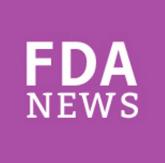The Food and Drug Administration has approved a new type of insomnia drug, the orexin receptor antagonist suvorexant (Belsomra).
It is the first drug in the class to be approved. Suvorexant blocks the binding of orexin A and B neuropeptides to orexin receptors, presumably inhibiting activation of neurons to the arousal system.
But it will not be available until the Drug Enforcement Administration makes a final determination of where it should fit on the schedule of controlled products. The FDA recommended scheduling, and the DEA proposed earlier this year that it receive a schedule IV classification under the Controlled Substances Act, according to suvorexant maker Merck.
The company said it expects suvorexant to be available in late 2014 or early 2015.
Merck had applied for approval in 2012. In May 2013, the FDA’s Peripheral and Central Nervous System Drugs Advisory Committee had questions about the safety of the company’s proposed starting doses. A few months later, the FDA advised Merck that it should make 10 mg the starting dose for most patients.
The company had not been prepared to manufacture that dose, so went back to work and created several new tablets.
Now, according to Dr. Ellis Unger, director of the Office of Drug Evaluation I in the FDA’s Center for Drug Evaluation and Research, "the FDA has approved Belsomra in four different strengths – 5, 10, 15, and 20 milligrams." Dr. Unger, in a statement, noted that "Using the lowest effective dose can reduce the risk of side effects, such as next-morning drowsiness."
The agency and the company say that suvorexant should only be taken once per night, within a half hour of going to bed and at least 7 hours before the person plans to wake up. Patients should not take more than 20 mg a day.
Drowsiness was the most common side effect. In FDA-required studies of next-day driving performance, patients who took 20 mg had impaired performance. Patients who take 20 mg should be warned about driving or conducting any activities that require mental alertness the next day, said the agency.
The drug also has the potential to lead to what the FDA calls "sleep-driving and other complex behaviors while not being fully awake," including preparing and eating food, making phone calls, or having sex. Patients and their families are urged to call their physician if that type of behavior is observed.
Suvorexant will be dispensed with a Medication Guide for patients that details safety information.
Although the drug was studied in three trials, none involved a comparison with other approved insomnia drugs, so its comparative effectiveness is not known, the FDA said.
aault@frontlinemedcom.com
On Twitter @aliciaault
